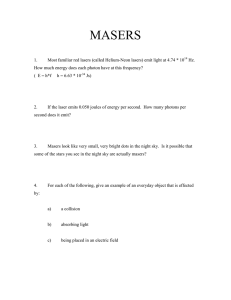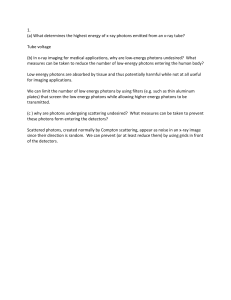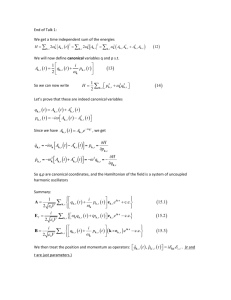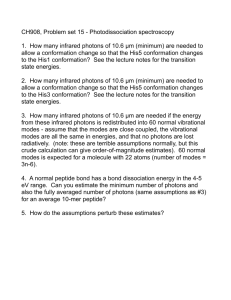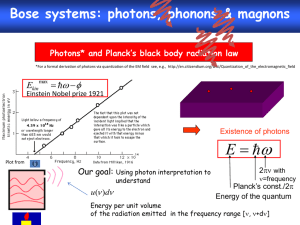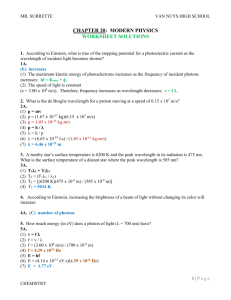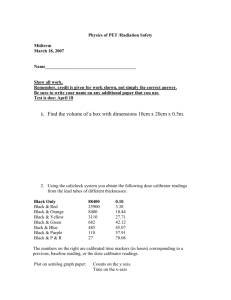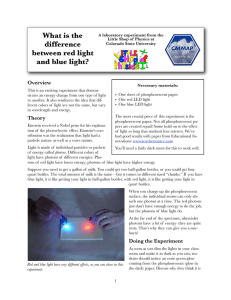QuizWk13Soln
advertisement
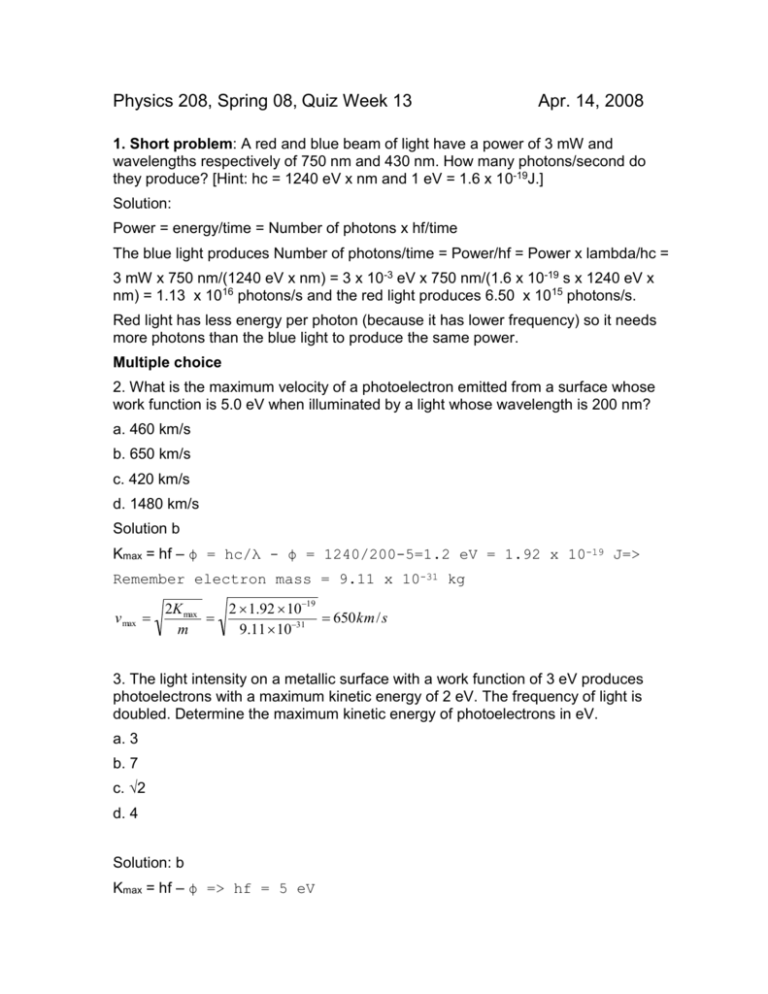
Physics 208, Spring 08, Quiz Week 13 Apr. 14, 2008 1. Short problem: A red and blue beam of light have a power of 3 mW and wavelengths respectively of 750 nm and 430 nm. How many photons/second do they produce? [Hint: hc = 1240 eV x nm and 1 eV = 1.6 x 10-19J.] Solution: Power = energy/time = Number of photons x hf/time The blue light produces Number of photons/time = Power/hf = Power x lambda/hc = 3 mW x 750 nm/(1240 eV x nm) = 3 x 10-3 eV x 750 nm/(1.6 x 10-19 s x 1240 eV x nm) = 1.13 x 1016 photons/s and the red light produces 6.50 x 1015 photons/s. Red light has less energy per photon (because it has lower frequency) so it needs more photons than the blue light to produce the same power. Multiple choice 2. What is the maximum velocity of a photoelectron emitted from a surface whose work function is 5.0 eV when illuminated by a light whose wavelength is 200 nm? a. 460 km/s b. 650 km/s c. 420 km/s d. 1480 km/s Solution b Kmax = hf – ϕ = hc/λ - ϕ = 1240/200-5=1.2 eV = 1.92 x 10-19 J=> Remember electron mass = 9.11 x 10-31 kg v max 2K max 2 1.92 1019 650km/s m 9.111031 3. The light intensity on a metallic surface with a work function of 3 eV produces photoelectrons with a maximum kinetic energy of 2 eV. The frequency of light is doubled. Determine the maximum kinetic energy of photoelectrons in eV. a. 3 b. 7 c. √2 d. 4 Solution: b Kmax = hf – ϕ => hf = 5 eV If f is doubled K’max = 2hf – ϕ = 10eV -3 eV = 7 eV. 4. A neutron has de Broglie wavelength is 1.4 x 10-10 m. What is its kinetic energy in eV? The neutron mass is 939.573 MeV/c2 = 1.67 x 10-27 kg. a. 4 b. 0.4 c. 0.04 d. 40 Solution c. h p2 h2 (hc) 2 12402 K 0.04eV p 2m 2m2 2mc 2 2 2 939.573 10 6 0.14 2

